#pictorial manipulation
Note
Pls do Yandere!Alucard part 3!! I love the others! 😍
Ask: Pls do Yandere! Alucard part 3!! I love the others! 😍
A/N: I’ve gotten two asks for Part 3, so here you go. Note: Here are [Part 1] & [Part 2]. And other Yandere! Alucard’s imagines can be found here.
TW!: As always, this is a fictional work about a fictional character. Manipulation and abuse in real relationships are never okay, and it’s never your fault. If you need help, please click on any of these: [x] [x].
Oh and for some ambiance while reading, listen to this: [x]
* * *
It had been less than 24 hours since you and your father moved into Alucard’s castle. The journey itself was horrendous, with your father laying down in the back of a rented cart, coughing with every bump in the road.
‘At least he agreed to come,’ you thought.
Truth be told, your father was never keen on the help of strangers, and you suspected that much was still true. It must have been the delirium from his fever that encouraged him to consent to such arrangements.
Alucard was kind enough to help you unload your belongings once you arrived at the castle. He even insisted on carrying your father to his new room. You thanked him profusely. It took all your strengths, your fathers and yours combined, to simply get him into the cart for the journey there; yet there Alucard was, carrying him as if your father weighed no more than a feather.
Truthfully, you were rather surprised to see Alucard walking around in the daytime- a trait you thought vampires did not possess. It seemed the more time you spent with Alucard, the more you found yourself amazed at his physicality.
Alucard had set your father up in a room exactly two floors above yours, citing contagion as a risk. Your room, you learned, was closer to Alucard’s own, just down the hall from it, should you ever need something in the later hours of the evening.
“So, I take it you don’t sleep in a coffin then?” You asked him.
“Not currently, no.” He answered rather plainly. “Although I have slept in one before.”
You nodded, intrigued. “What was that like?”
“Sleeping?” Alucard’s gaze lingered on the dark circles under your eyes. “It’s a wonderful human invention. Perhaps you should try it sometime.”
You rolled your eyes at his dramatics. “I sleep just fine,” you argued. “Besides, now that Father is here and I’m not the only one watching over him, I think I’ll sleep better. Does this mean you’ll take the first watch?” You teased back.
“First watch?” Alucard stopped in his tracks. “Just what sort of creatures do you believe reside in this castle?”
“No, I… What I meant was, for my father, I’d stay up with him at night, in the event he needed anything. Now that you’re here, I just assumed we would be taking turns.” You raised your hands defensively. “Of course, I don’t expect you to. I’m fine staying up with him by myself.”
Alucard regarded you pitifully for a moment before he continued walking. “I have some tea in the kitchen,” he said. “Allow me to show you where that is.”
Silently, you followed the tall blonde, wondering if you had said something to offend him. Perhaps your coffin comment?
“Cozy.” The rich voice of your acquaintance brought you back to the present.
“I’m sorry?” You asked.
“The coffin,” Alucard repeated, descending the stairs, “It was rather cozy.”
* * *
The castle itself seemed rather dreary and uninviting the first few times you had broken in. You supposed it was the nature of your entrance that colored it so because now, it most certainly transformed. Gone was the cold oppressive gray interior.
Instead, you found yourself catching a glimpse of gloriously detailed bewitching pictorial carpets and paintings decorating the walls, luxuriant red carpet providing padding under your feet, and thick insulating curtains pulled open with pendulum tiebacks between every major room. It was a bit odd, to say the least.
In addition to that metamorphosis, the dust and stale air seemed to have vanished as well. Perhaps, Alucard tidied up before you and your father’s arrival, but that seemed quite impossible; the castle was enormous, and a fortnight was certainly not enough time for him to have made such preparations. It would have taken days if not weeks to change the castle’s appearance. Surely, you must have been mistaken.
Following Alucard to the kitchen, your curiosity got the better of you.
“Are things… different, in here?” You asked.
Alucard turned his head back to you, seeing your wandering eyes and interested expression. “No,” he waved off your amazement, “The castle has stayed the same way for years, cemented long before you arrived.”
You nodded, frowning only a little bit. “It’s just I could’ve sworn-”
“And here we are,” Alucard’s announcement cut you off. “This is the kitchen. One of them at least. It’s the only one I’ve frequented, anyhow.”
You walked into a rather large-sized kitchen, with a tiled floor and two sets of iron-barred windows- one right over a large metal tub sink and another perpendicular from the first and centered so the light could shine on the main oak dinner table. Across from that second window, near the entrance door, was a large cast-iron oven, set against a brick chimney. Nestled in the furthest corner of the room was a series of Welsh dressers and cabinets, stocked with plates, utensils, and other miscellaneous dinnerware.
“It’s lovely,” you spoke, amazed. You were drawn to one of the Welsh dressers, noticing a set of brightly colored objects there. “What are these? Dolls?” You reached out to touch them.
Alucard scooped them up before you could, and quickly shoved them inside one of the dresser’s drawers. “Those aren’t important, don’t worry about those.”
“Oh, okay,” you said, biting your lip.
“What?”
“Nothing, it’s just,” you gestured to where the dolls were hidden, “I wasn’t going to make fun of you, you know.”
Alucard walked over to the stove. “Oh?” He placed a kettle on one of the cooktops, before turning a knob and striking a match to ignite a small flame.
“I have, or, had dolls from my childhood too. They’re probably falling apart at the seams back home somewhere,” you mused, “Or I might have lost them. Either way, it’s nothing to feel shame about.”
Alucard swallowed harshly. “They were… they remind me of some old friends who are no longer with us.”
“Oh, I’m sorry to hear that.” You pulled out a chair from the table, opposite the side with the stove. “Did they live here as well?”
Alucard nodded, retrieving a tea set from a different dresser. “For a short while, yes.”
“What happened to them?”
He shrugged, placing a fine pewter saucer and teacup before you. “The same thing that happens to all humans: they were born, they aged, they died. It's certainly not a novel concept.”
At that moment you felt such sadness for him. You knew the castle was ancient, and you knew the stories of vampires began long before you were born, but you never bothered to ask Alucard his age, or where he fit in with the timing of all the local folklore.
“If you don’t mind me asking, how old are you exactly?” You watched the slightest bit of a smirk grace Alucard’s face.
“Old.”
“‘Old’?” You echoed.
“Older,” he said again for emphasis.
“Older than me?”
He nodded.
“Older than my Father?”
“Yes,” Alucard answered, drawing out the ‘s’ sound, in a soft hiss.
Nervous, you picked up the empty teacup to admire it. The metallic pewter cup was rather dainty, with an impressive embossed pattern at both the top and bottom rims with an equally impressive embossed saucer to match. It was very pretty, and nothing like you had at home.
You watched as Alucard poured the boiled water from the kettle into the large metal teapot on the table. The silence as he poured felt more and more suffocating as time went on. You suppose Alucard felt it too, seeing as how once the kettle was back on the cooktop, he was the one to initiate conversation.
“You and your Father are close, I presume?”
You nodded. “More so since my Mother and older Brother passed.” Seeing Alucard’s perplexed expression, you continued. “She died in childbirth, and my Brother, well, he joined her shortly after. That was a few years ago. My Father’s all I have left.”
“Why haven’t you married?”
“Excuse me?”
“You’re well of age.”
“I-” you scoffed, momentarily lost for words. “Are you calling me old? I’m the youngest one here!”
“You’re avoiding my question.”
“I’m not obligated to answer.”
Alucard said nothing, only picked up the pot and poured you a cup of steaming, freshly brewed tea. Again, the two of you sat in silence.
Feeling less awkward with the silence this time round, you blew lightly over the rim of your cup before taking a tentative sip, careful not to burn your mouth. You then watched half in awe, half in horror as Alucard took a hearty sip, clearly unfazed by the scalding hot temperature.
Seeing your appalled expression, Alucard chuckled a bit. “Another vampire trait.”
“Is there anything that harms you?” You asked, incredulous. “You don’t burn up in sunlight, you’re not controlled by feral bloodlust around people, and just now with the tea, scalding water doesn’t phase you one bit.”
“I do have weaknesses retained by vampires, yes. Just as I have vampiric strengths.”
“How do you know which is which?” You asked, taking a sip of your tea, the temperature finally being low enough.
“I’ve had years to experiment. Trial and error.” He answered.
“Yes, but if your trial went wrong, couldn’t you accidentally injure yourself?”
“Better me than an enemy.”
You nodded. “I suppose.”
“What about you?” Alucard asked. “How long did you experiment before realizing you needed further help in curing your Father?”
You thought back. “I didn’t do any experiments, I just tried everything I thought of to make him better. And I thought it worked, but then the sweats-
“And the cough?” Alucard interrupted.
“Yes, the cough returned. So I visited our wise woman and she sold me a tincture of wormwood and radish. It didn’t do anything. Well, it turned his skin red, but that’s about all. That’s why I came here. This place was my last hope.”
Alucard did not comment on your desperation as he poured you more tea.
“I’m truly grateful. Thank you,” you said, accepting the refilled cup. “Thank you for this,” you gestured to the tea, “And for this,” you said, gesturing broadly around you.
Alucard brushed off your appreciation with a nonchalant wave of the hand. “It’s nothing.”
You shook your head. “We had run out of options, what you’re willing to do, to try, it’s everything.”
Alucard looked at you with his trademark melancholy expression. “As I said before, I believe I know what’s wrong with your Father, and I’m going to do everything in my power to make him well. But before we begin…” His hands reached out and clasped one of yours.
You nearly jumped from the temperature difference. Your hands, having been warmed by the tea, felt like fire compared to his slender icy hands against your skin.
“There are a few things you must know.”
* * *
On the outside, Alucard played it cool, but on the inside, he was beaming. It had all been so easy! So easy to gain your trust, to gain your thanks. So much progress had been made and yet, he had learned your name just one week prior. You had relocated your belongings to a room in his castle, all transferred willingly, with no intention of removal anytime soon. Everything was working out better than he could have planned!
He was a bit hesitant to show you around the castle, having changed so many things. Then again, he assumed you’d be in too much of a state to notice. Castlevania was alive in and of itself, and he, as the inheritor of the estate, wielded a good amount of control over the living, breathing structure. The last-minute changes in decor were more of an afterthought on his part. Alucard truly didn’t mean to lie to you so blatantly, at least, not so soon after your arrival, but he had no choice. He feared that should he reveal he changed the entire castle’s decorum just to impress you, you would learn his feelings were much more intense than he was letting on.
There was always a slim chance you’d feel flattered- a single woman such as yourself. Then again, in the past, Alucard recalled, his intentions were rarely well-received. It had been generations since he truly felt the love and affection of another, and it could be argued that those relationships formed solely out of proximity among Trevor’s, Sypha’s, and his destiny. With his Father vanquished, and the remaining group of supernatural beings continually shrinking in size, Alucard was further isolated as time went on. And it wasn’t just companionship he was missing.
The longer Alucard existed alone in that castle, the less human he became; or rather, the less human he recalled how to be. That was also, partly, the point in changing up the castle, particularly the kitchen. He didn’t frequent it much, he had very little need to. Sure, he prepared food and ate on occasion, but as a dhampir, he needed very little to survive. Eating food was always more of a pleasure than a requirement. But then you were going to be living here, sleeping here, eating here. Things needed to be updated, for your usage. As a matter of fact, in his haste to have Castlevania conjure all the right things for you, he had forgotten to remove his newest addition of Trevor and Sypha dolls from the kitchen. It was a cruel trick on the castle’s part- knowing full well he wouldn’t approve of such items in his design, and yet, the castle left them anyway. It was embarrassing, and a further reminder of how rushed so many aspects of his plan were. Then again, you seemed to find it rather endearing. So perhaps, in the end, the visages of his long-lost friends worked in his favor.
Besides, he was able to regain the upper hand, thanks to his question about your lack of a spouse. He hadn’t meant for it to come off as teasing, although, in a way, he later found he was glad it did. It brought an air of familiarity to your conversation, one that wasn’t present before. He… liked it. He liked it a lot.
The two of you were still very much strangers, but things were most certainly moving in the right direction.
Of course, the one sore spot in all of this was the state of your Father. Alucard wouldn’t call his prognosis hopeless, but it was certainly headed in that direction. It was clear from the moment the two of you had arrived, judging by your Father’s feverish and exhausted body in the back of that run-down cart, that there was little he as a physician could do to treat him. Even his Mother, the great Doctor Tepes would have been forced to face the harsh reality that there was little any doctor could do to secure this patient’s fate- either living or dead. In cases like these, fate seemed to hang on the wind, one swift blow in either direction could have your Father miraculously recovering, or being laid to rest.
Then again, he had no intention of telling you that. You didn’t need to know. All you needed to know was that as long as your father was still breathing, Alucard was doing everything within his power to save him. The only thing he needed from you was your continued trust. As long as he had that, everything would work out perfectly.
* * *
A/N: WHY DID THIS TAKE ME SO LONNNNGGGG?????? UUUGGGHHHH.
Anyway, Part 3 is here! Yea! Maybe three months from now, there’ll be a Part 4, lol. The Ask Box is still currently closed to requests, but comments and critiques (and fellow fangirling) are always welcome! (No fr, tell me how you feel about Alucard cuz I love him & it has become a full-blown problem.)
Oh, and because I’m not a doctor or an expert of any kind, I used these links for figuring out what tuberculosis looked like in the 14th century: [x], [x] & [x]. And here’s where I read up on old-timey medicine: [x].
Links about TB:
Britannica Encyclopedia: https://www.britannica.com/science/tuberculosis/Tuberculosis-through-history
TB Online: https://www.tbonline.info/posts/2016/3/31/how-tb-infects-body-tubercle-1/
Latent tb vs tb disease (The CDC): https://www.cdc.gov/tb/topic/basics/tbinfectiondisease.htm
Old Timey Medicine: https://www.abdn.ac.uk/sll/disciplines/english/lion/medicine.shtml
#yandere castlevania#yandere alucard#yandere imagine#alucard imagine#castlevania imagine#castlevania x reader#alucard x reader#yandere!alucard#castlevania#yandere#tw: yandere#os#alucard tepes x reader
239 notes
·
View notes
Text


"The Magician is a powerful symbol in the Tarot. He represents manifestation, power, creativity, and resourcefulness. He has one hand pointing towards the sky while the other points towards the earth, representing a connection between the ethereal and terrestrial realms." - the Pictorial Key to the Tarot
Who better to be the magician than the man who could manipulate many into being his zombie slaves?
#slugterra#slugterra twisted ends#slugterra fanart#fanart#slugterra art#art#tarot cards#tarot#slugterrian tarot#mr saturday#slugterra mr saturday
22 notes
·
View notes
Text
For #InternationalTigerDay 🐅 on #Caturday:
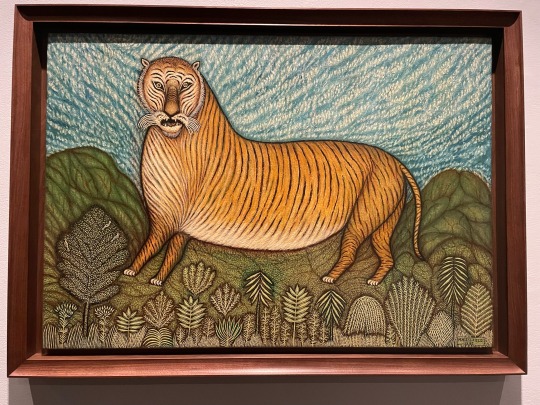

Morris Hirshfield (1872-1946)
Tiger, 1940
Oil on canvas
From the Morris Hirshfield Rediscovered exhibition at American Folk Art Museum in NYC.
>”Among 20th-century American paintings, I do not know .. a more unforgettable animal picture than Hirshfield's Tiger."
-ALFRED BARR
When the founding director of The Museum of Modern Art declared this painting "unforgettable," he was responding both to the charisma of Hirshfield's jungle cat and to such fantastical pictorial choices as a painted sky that appears to be an expanse of blue yarn. Such unexpected pictorial associations recall the artist's prior professional life in the garment industry. Hirshfield manipulated paint to echo the woven materials he formerly cut into patterns, sewed and tailored into coats and suits, and sold in a retail shop. Hirshfield's "textile imagination" is especially apparent in Beach Girl. On close examination, virtually every element in the painting (including water, sea, and sky) suggests the weave of a different fabric rather than a natural feature of a beach.<
#animals in art#American art#20th century art#1940s#Morris Hirshfield#American Folk Art Museum#museum visit#exhibition#painting#oil painting#tiger#feline#modern art#animal holiday#International Tiger Day#Caturday
17 notes
·
View notes
Text
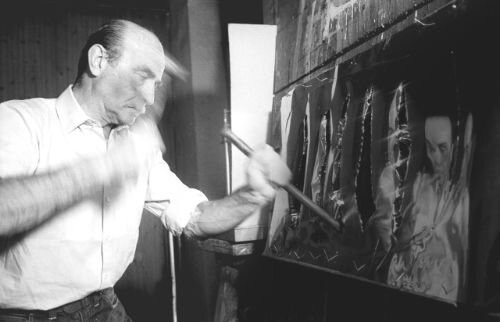
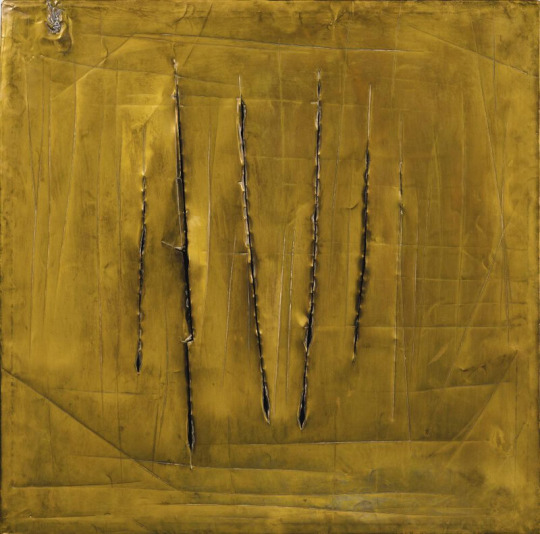
Lucio Fontana (1899 - 1968), Concetto spaziale, New York 8, signed, lacerations and scratches on brass.
Lucio Fontana in his studio. 1962
Executed in 1962, Lucio Fontana’s gleaming brass painting Concetto spaziale, New York 8 is a resplendent example of the artist’s celebrated investigations into pictorial, physical and cosmic space. The work comes from Fontana’s body of Metalli – or metal sheets – which were created between 1961 and 1968. Begun when the artist was 62 years of age, the works in this series explore the possibilities of gestural expression on incandescent sheets of metal, including copper, zinc, aluminium, and, as in the present work, brass. Scratching, gouging, and tearing violent incisions into these sheets of metal, Fontana opens out the flat pictorial plane into the depths of the third dimension, revealing an infinite vortex of space. Desirable and extremely rare, the works in this series were dedicated to the twinkling, light filled ‘City that Never Sleeps’ that inspired their creation: New York. Fontana’s vast impact on the course of contemporary art is being commemorated this year in the first major survey of the artist’s work in more than forty years at the Metropolitan Museum of Art, New York.
In 1961, Fontana was invited by Paolo Marinotti, the owner of the exhibition centre at Palazzo Grassi, Venice, to create a cycle of paintings known as the Venezie for the acclaimed Arte e Contemplazione exhibition. Exhibiting alongside the likes of Jean Dubuffet, Mark Rothko and Sam Francis, Fontana produced a number of lustrous oil paintings in a thick lavishing of metallic paint, inspired by the Baroque characteristics of the city of Venice. Manipulating the surfaces of these works, Fontana tore into the canvas to create his iconic tagli (cuts) and buchi (holes). The works dazzled the public and, later that year, they were exhibited in New York. Fontana travelled to the city for the very first time in November 1961 and was enthralled by its powerful magnetism, unlike anything he had seen before: “New York is more beautiful than Venice!!” he exclaimed, greatly affected by the immense verticality of the city, and the vast metal structures of the high-rise buildings that filled Manhattan’s skyline. “The skyscrapers of glass look like great cascades of water that fall from the sky!! At night it is a huge necklace of rubies, sapphires, and emeralds” he wrote in a letter to his friend, the architect and collector Mario Bardini (Lucio Fontana cited in: Exh. Cat., New York, Guggenheim Museum, Luca Massimo Barbero, Lucio Fontana: Venice/New York, 2006, p. 37).
Concetto spaziale, New York 8 invokes the immense and dynamic metropolis of New York City. Radiant with energy, charisma and charm, bustling with people, and filled with endless, towering skyscrapers, the city captured Fontana’s imagination. In a natural progression from the sparkling surfaces of his Venezie paintings, Fontana turned to the medium of metal in order to evoke the omnipotent and awe-inspiring wonder of his newly discovered New York. In the present work, five bold lacerations cut forcefully through the flesh of the brass, in an echo of the city’s skyline, as countless scratches and indentations score its surface. They reflect and diffract the light, creating a play of brightness and shadow that flits across the pictorial plane. “New York”, wrote the artist, “is a city made of glass colossi on which the Sun beats down causing torrents of light” (Ibid., p. 43). Indeed, the present work seems imbued with the warmth of the city’s rich and golden sunlight. Just as Venice, with its sensual allure and antique charm, had powerfully inspired Fontana’s aesthetic, so did New York captivate and enchant him with its grand industrial force. Thus does Concetto spaziale, New York 8 offer a compelling metaphor for this utopia of man-made modernity.
The Venezie and New York cycles represent some of the most sublime and opulent works of Fontana’s career. Indeed, the present work was exhibited in a number of eminent exhibitions including Fontana’s major 1977 retrospective at the Solomon R. Guggenheim Museum, New York, as well as at the Musée National d'Art Moderne, Centre Georges Pompidou, Paris (1987-88), and the Palazzo delle Esposizioni, Rome (1988). More recently, the two series became the focus of a celebrated exhibition, Lucio Fontana: Venice/New York, which travelled from the Guggenheim in Venice to New York in 2006-7. Held in important museum collections worldwide, Fontana’s Metalli works have achieved an almost mythic status within the artist’s career. With its iridescent and mesmerising beauty, Concetto spaziale, New York 8 encapsulates the radical aesthetic of this sought after series.
Courtesy Alain Truong
41 notes
·
View notes
Text
Clarence Hudson White (1871–1925) was an American photographer, teacher and a founding member of the Photo-Secession movement. He grew up in small towns in Ohio, where his primary influences were his family and the social life of rural America.
Clarence White has been described by photo historian Naomi Rosenblum as the one who may be considered the archetypal Pictorialist photographer of the United States.
In the early 20th century, the Photo-Secession movement was born. This movement was all about seeing photography as fine art and not just being for documentation. Pictorialism was celebrated and emphasized within the movement, which is a style of photography in which photos were usually manipulated to turn them into art. The subject matter was also usually styled and posed. Basically, Pictorialism was all about the use of artistic interpretation in photography instead of strictly capturing reality.
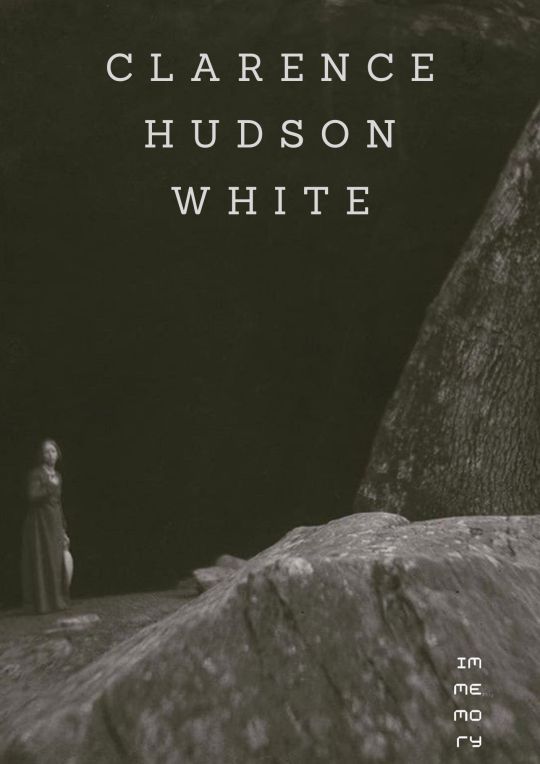
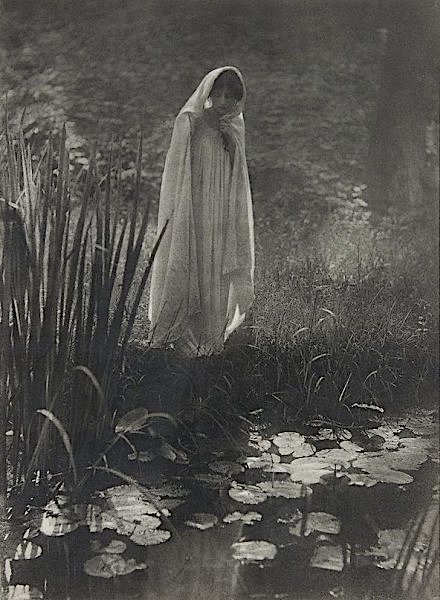

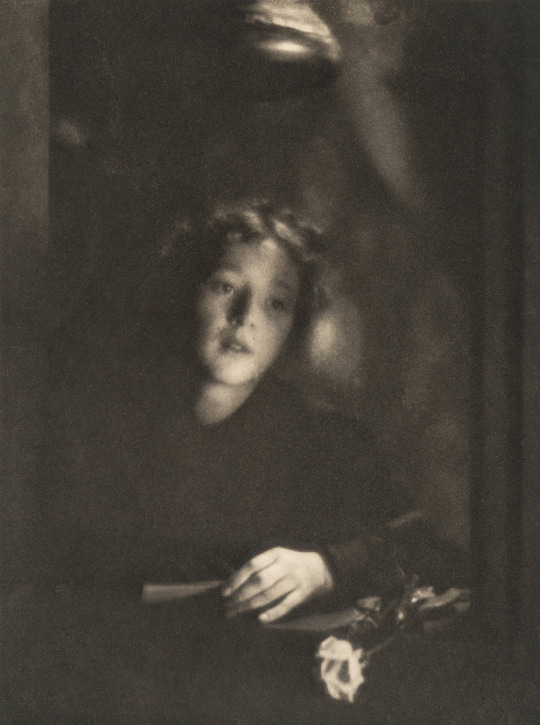
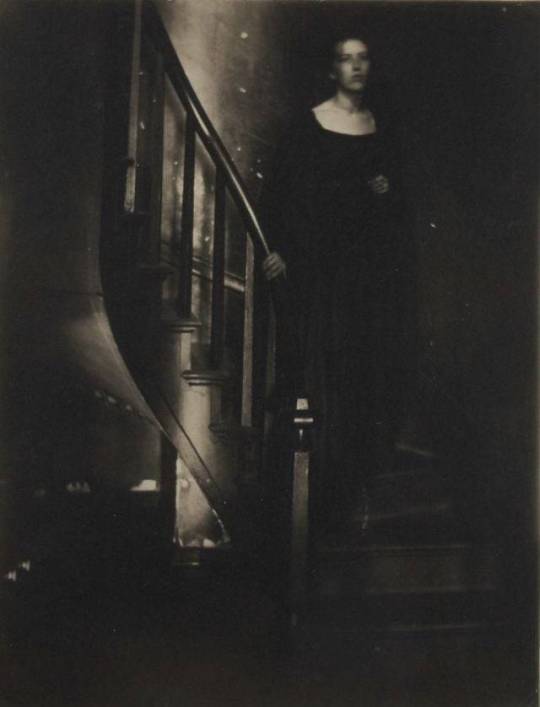


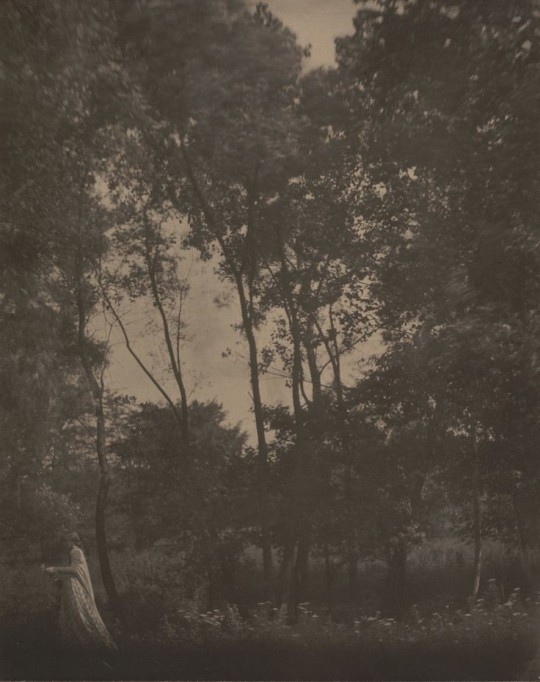


#clarence hudson white#pictoralism#photography#culture#art collective#photomagazine#art#london#bnwphotography
28 notes
·
View notes
Text
How to: Sigils
What is a Sigil?
A sigil is a symbol with a mystical or magical meaning. The term sigil deriving from the Latin sigillum, meaning "seal".
Historically speaking the term sigil referred to a type of pictorial signature of an angel, daemon, or spirits, for example, The Lesser Key of Solomon that contains the sigils for the princes in the hierarchy of hell. These sigils were believed to be a representation of the true name of the spirit and thus granted the magical practitioner some control over the being.
A chaos magic sigil is different from these historic sigils because we’re not calling upon any particular spirit, instead using a personal intention or goal to formulate and charge a custom symbol, the intention setting being crucial. Crafting a sigil begins by coming up with a sentence or phrase which best encapsulates what we’d like to achieve.
FIRST: the way you can activate said sigils is by
Burning
Burying
Flushing down the toilet
Dissolving in water
Simply drawing on it, and concentrating on your intention
Meditate with the sigil in hand
If you decide to burn it you could keep the ashes for black salt or curses/hexes/jinxes(depending on what the sigil was for)
SECOND: there are many ways to create a sigil, from simply free-hand draw the sigil with the intention clear in your head, or using tabels .
THE WORD METHOD
VER.1
This method relies on words. It requires you to express clearly what you want and it must be said as you already have said thing and not as a whish for the future.
ex: Am curaj/Am curajul de care am nevoie (I am brave) -> the correct way, present tense
Vreau sa am curaj (I want to be brave)-> the wrong way, future tense
So for example, let's say I want courage/bravery, I would start with something like:
AM CURAJ
And from there, I will get rid of any duplicate letters. Resulting in: AM CURJ
In this method, we won't be getting rid of the vowels since this method can also be used as a mantra as well by rearranging( or not) the remaining letters to form something that can roll off the tongue.
ex: AM CURJ, MA JURC, JARUMC etc.
After all these steps have been done, the visual aspect of the sigil can be done.
This will be done by:
A. Overlapping the letters

B. Placing them however you like

C. Breaking the letters into simple lines and shapes
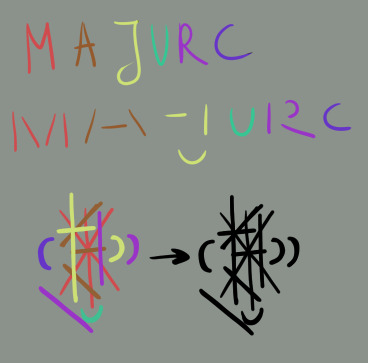
Both designs can be decorated once decided upon.
For example:

At this point it is quite apparent that letters can be rotated, turned upside down, manipulated in any way really. This gives a lot of creative freedom and uniques to your sigil.
VER.2
The second version of this method is the same as above, but we also take out the vowels.
THE PICTORIAL METHOD
In this method we create a visual representation of the sigil we want. Continuing with the "courage" sigil, in the pictorial method should be an image which for the practitioner, in this example, represents courage.
Most people associate courage with warriors, lions, etc, so for this the basic for of the pictorial sigil of courage would be:

A brave warrior whose core is their heart, equipped with a mighty sword for their bravery and a shield for courage, for being resilient and not giving up.
Now, you can stop here, OR we can take it a step further. Using the basic lines from the stick figure we can create another sigil.

AGAIN, you can manipulate the shapes and decorate the sigil however you want to.
THE SIGIL WHEEL
Using a sigil wheel like this:

We can create with these methods:
a) the word method, but we connect the letters with straight or curved lines.
b) for every word the phrase has we create a separate sigil and then combine them
METHOD A:

METHOD B:

THE TABLE METHOD
The table method is very much the same as the wheel but square shaped and instead of letters we will use numbers assigned to letters.
This first chart is the correspondence from letter to number.

This following chart will be the one we will draw after.

Using the example of " CURAJ " the sigil will look like:

So we can see that some letters are in the sane spot, in drawing we can fix that like this:

Any of these designs can represent a repetition, you can also just ignore the repetition if it's one after the other but I'd suggest at least using curved lines if it’s a number you came back to after a while.
And from here on, you can decorate it as you please.

Try it out for yourself, you might find peace and happynes in sigils :)
Sources:
Personal experience
The fundamental book of Sigil Magick by K.P. Theodore
Interesting blogs you might want to look to for inspiration/already made sigils:
Sites that can help you make sigils:
41 notes
·
View notes
Text
Visual Imaginaries, Tactile Poetics, Creative Sensitive Haptic Poetics.
During my creative process, I draw upon the expressiv line of my unconscious to create a rhizomatic and intuitive poetic narrative. My goal is to construct a fragmented atmosphere that invites viewers and participants to immerse themselves in the material poetic space. This creative approach involves using the original observations and thought processes of my hands to create visual imaginaries, as well as tactile, haptic, and sensitive poetics.
The artifacts I create have an organic nature, and often interact with each other to assemble and disassemble fragmentary works that build a collective play atmosphere. To achieve this, I use vibrant and sensitive techniques that are reflected in ceramic objects and pictorial exercises. I draw inspiration from found objects and sustainable organic materials such as mud, residues, primitive and original elements.
My poetics line in the encounter with the material in its purest state, and the direct manipulation of materials is the beginning and meaning of the organic architecture of my works. My creative process involves reflecting on poetic interculturality, thinking collectively, micro-politics, sensitive politics, vanishing points, open points, turning points, points of questioning, points of destructuralism, and exiting social normativity.
As an artificer, my trade is brought to the collective through manual craftsmanship of thought, collective writings, constructive mental systems, and experimental bio-construction of desire. I assemble natural materials to create unique and inspiring installations. For example, in my installation “Macula” (2018), I transformed remains of engraving into a system of spots that, when grouped and or- dered, became a modular unit that adapted to different spa- ces, offering new and infinite possibilities.
4 notes
·
View notes
Text
Monday's Photography Inspiration - Robert Demachy
Robert Demachy was a French Pictorial photographer of the late 19th and early 20th century. He is best known for his intensely manipulated prints that display a distinct painterly quality. He was influenced by the Impressionist painters and spent most of his time making photographs and developing his theories on photography, both technical and aesthetic.
Léon-Robert Demachy was born…

View On WordPress
#architectural photography#Black & White#black and white photography#inspiration#inspiration of the week#inspirational photographers#inspirations#Monday&039;s photography inspiration#pictorialism#pictorialist#portrait masters#Robert Demachy#Robert Demachy photography
6 notes
·
View notes
Text
you ever stumble upon art or spend time in nature and think, "ah yes, this is why i should leave the house"
music really adds to this piece.
QUAYOLA "EFFETS DE SOIR"
Quayola’s incredible mastery of digital techniques and expansive base of pictorial knowledge allow him to continually fluctuate between art and nature, painting and vegetation.
The landscapes serve as a point of departure – a pretext to shape an inner motion and vision. Through the misuse of image-analysis and manipulation algorithms, he challenges the photographic image and proposes alternative modes of vision and synthesis.
2 notes
·
View notes
Photo
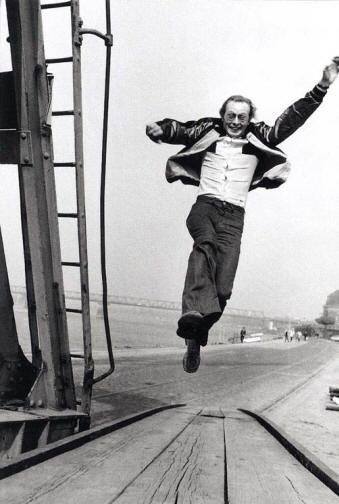
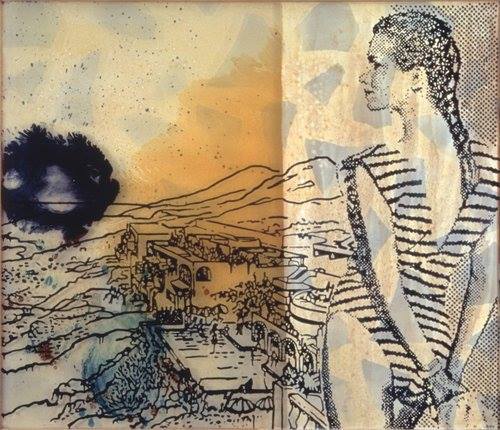
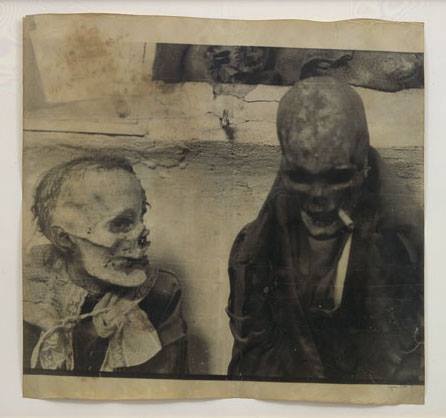
Sigmar Polke (1941 – 2010) was a German painter and photographer, father of the painting movement "Kapitalistischer Realismus"("Capitalist realism” - 1963). It is an anti-style of art, appropriating the pictorial shorthand of advertising.
Polke experimented with styles, subject matters and materials. He manipulated everything and developed techniques of multiple exposures and multiple negatives. In the 1980s, he produced abstract works created by chance through chemical reactions between paint and other products.
18 notes
·
View notes
Text
India’s Top Triangular Bandage | Tubular Bandage | IV Cannula Fixator | Gauze Swab | Manufacturers
Triangular Bandage Manufacturers
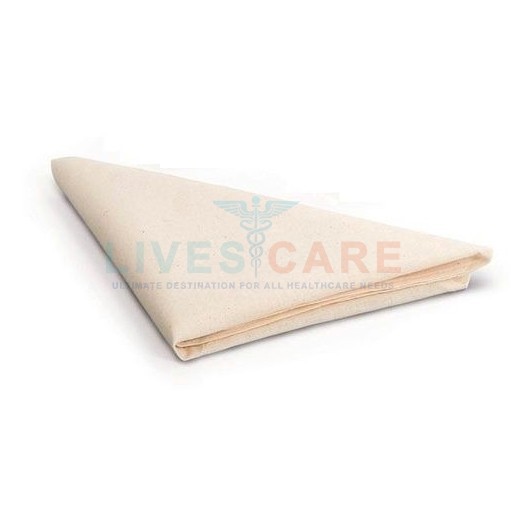
We are the forefront manufacturer, exporter, and supplier of high-quality Triangular Bandage. It has earned us wide appreciation due to its quality, durability, and hygienic nature. Available in different forms either plain or pictorial, this bandage is generally used for first aid purposes.
Fabricated as per the medical standards using high-grade fabric and is free from external contaminants, this bandage is highly durable as it is manufactured(Triangular Bandages Manufacturers) with high precision. Further, clients can avail of this product at the most affordable price.
Features:
Material: Strong unbleached cotton fabric.
Bandage in the shape of a triangle.
Application / Usage: Hospital / Clinics
Made of 100% cotton
Complete with two heavy-duty safety pins
Most essential emergency First Aid equipment
Sizes:
96 cm x 96 cm x 135/136 cm
90cm x 90cm x 127cm
90cm x 90cm x 125cm
60cm x 60cm x 90cm
Also available in non-woven fabric.
Triangular Bandage is being manufactured and supplied by a company reputed because of excellent product quality.
Medilivescare Manufacturing is known as India’s Top Triangular Bandage Manufacturers. We provide high-quality Cotton Triangular Bandages at a very affordable price. We provide OEM Service and are known as a leading Triangular Bandage Supplier and Triangular Bandage Exporters in India. Our Triangular Bandages are exported to various African and Middle East countries.
Gauze Swab Manufacturers
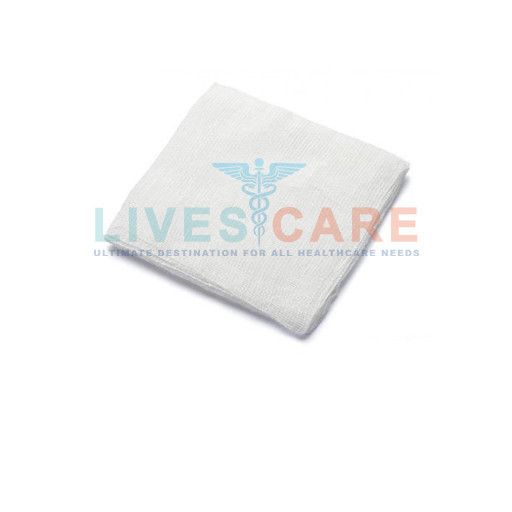
Due to its extensive software Gauze swabs(Gauze Swab Manufacturers) are available both in sterile and unsterile shapes, with different ply and types relying on the absorbency required. We manufacture extensive specification and packing, and packaging SKUs for Gauze Swabs.
Sterile Gauze Swabs – Non-Sterile is a high-quality product and is trusted all across the globe. Non Sterile is being synthetic and supplied by the business enterprise reputed because of its fantastic product fine, pleasant service, and professional approach. Scroll all the way down to see specifications and evaluations.
We have also manufactured(Gauze Swab Manufacturers) a Non-Sterilized Gauze Swab. We offer the best quality highly absorbent non-sterilized Gauze Swabs in accordance with the Pharmacopeia Standards. Our product serves the desires of several commercial fitness care provider companies such as hospitals, nursing houses, etc. Our Swabs skip via rigorous assessments for quality manipulation, cloth structures, and softness due to uniform discovery free especially absorbent gauze cloth.
We are Top Gauze Swab Manufacturers in India. We offer Sterile Gauze Swab, No sterile gauze swabs, Gauze Swabs with or without X-Ray Detectable Thread, Surgical Gauze Dressing, and/or Gauze Pads at the lowest prices. Superior quality and affordable prices are guaranteed. We provide OEM also for numerous customers for Gauze Swab. We deliver Gauze swabs in specific qualities and percent sizes in step with customer requirements. We are Top Gauze Swab Manufacturers and the Best Gauze Swab Exporters in India.
Features:
Made of 100% cotton. Bleaching is done by Hydrogen peroxide & de-mineralized water.
All swabs are with folded edges - therefore No loose threads.
Available with or without an X-Ray detectable line.
Available in Quality B.P. Type 13 & B.P. Type 17.
Sizes available :
5 x 5cm (4 / 8 / 12 ply)
7.5 x 7.5cm (4 / 8 / 12 ply)
10 x 10 cm (4 / 8 / 12 ply)
10 x 20cm ((4 / 8 / 12 ply)
Available in 1, 2, 4, 5 & 10 pcs packing and Sterile / Non-sterile as per customer/project requirements.
Available in 100 pcs. packing as non-sterile.
Other customized sizes are also available such as:
35x40cm
10 x 60cm.
Product Features List :
High Absorption Capacity.
Swabs have Folding Edges, so there is no chance of loose thread.
Made from Cotton Gauze Fabric
Usage :
For cleaning and swabbing wounds.
For dressing low exudates wounds
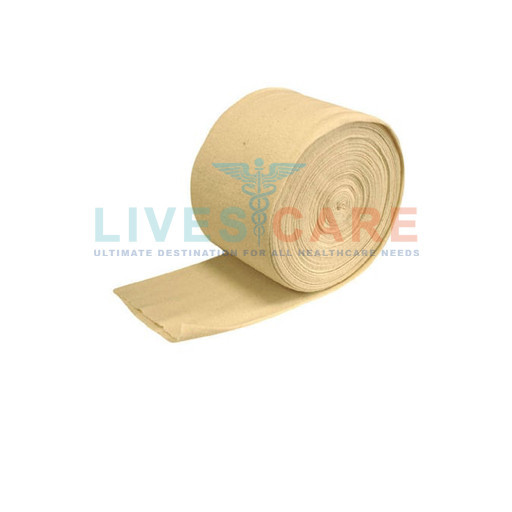
Tubular Bandage is a high-quality product and is trusted all across the world. Tubular Bandage is being manufactured and supplied by a reputed company because of its excellent product quality, friendly service, and professional approach. We are known as India’s Top Tubular Bandage Manufacturers in India.
Tubular Elastic Bandage presents uniform compression and guide of the appendages with minimal threat of constriction. It is easy to apply and comfy to wear, without the need for any clips or tape to hold it in location. Compressive power stays regular over a long length of use.
This versatile, bandage is low in cost and a better replacement for elastic wraps and other trendy supports. Holds bloodless/hot packs or bandages in place.
Washable
Breathable and Hypoallergenic
Uniform compression
Soft to the touch, good to feel
Dermophilic, hypo-allergic, causes no rash, is soft to touch, good to feel, washable and breathable.
Tubular(Tubular Bandage Manufacturers) design allows pull-on, quick and easy wearing and fitting without any pins or tapes.
The fawn color matches skin color for better aesthetics and can be worn inconspicuously under clothing.
Product Information
Cotton Stockinet Roll / Cotton Ribbed Stockinet.
Stockinet roll crafted from pleasant lengthy-staple cotton yarn and woven on a circular loom.
A free loop knitted fabric has inherent four-way stretch assets.
Hypoallergenic Seamless Product Made from high high-quality, excellent, long stapled cotton that stays cool all through summers and warm at some point in winter.
The cloth is hypoallergenic, cleanable, breathable, soft to the touch, and feels good. Knitted on modern-day machines for a four-way stretch.
Lightweight, seamless, long-lasting, snug healthy and remains in the role for a long time.
Easy pull-on put-on is made possible with the aid of the tubular design. The packaging is convenient and in particular designed with aspect slits for smooth unrolling.
Smooth texture, shrink-resistant, and skin-friendly.
Available sizes:
4.2cm x 10m.
5cm x 10 meters.
6.25cm x 10 meters.
7.5cm x 10 meters.
10cm x 10mtrs.
12.5cm x 10 meters.
15cm x 10 meters.
Customized sizes are also available.
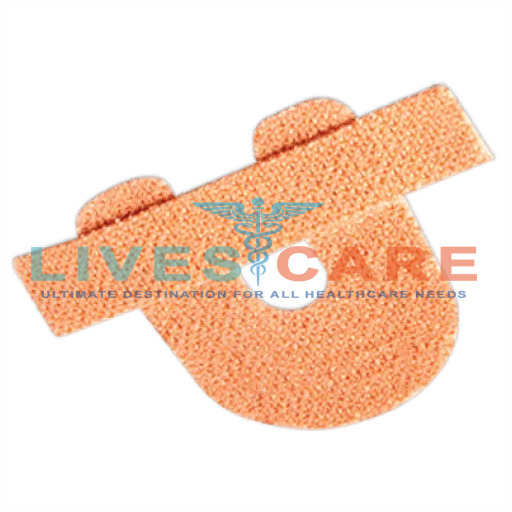
IV Cannula Fixator is very helpful for fixing IV Cannula and for general use. Made as per B. P. standards. Skin-collared elastic foam grip cannula fixator and porous adhesive used for air circulation. Cannula Fixators(IV Cannula Fixator Manufacturers) are highly elastic bandages that are for supporting the syringe entered into the human body to resist any strain and pain. It is made up of top-quality fabric which allows the passing of air and humidity very easily. The adhesive used is free from any toxins which makes the product skin friendly.
Product Information:
IV Cannula Fixator is shaped well to give a perfect grip over the I.V. Cannula(IV Cannula Fixator Manufacturers) during hospitalization.
Moisture-responsive High Moisture Vapour Transmission rate Film.
Low allergy grid pattern adhesive.
Porous adhesive to allow skin breathing.
Easy and Painless to do away with, because of skinny-non adhesive edges and leaves no residue after removal.
The IV Cannula fixator fastens the tube firmly to the pores and skin, whilst the pad covers the point of injection. The dressing allows air and humidity to skip freely.
The Material used does now not irritate the pores and skin and no strains of the adhesive continue to be at the pores and skin after removal.
Advanced Features:
Fixes the cannula prevents plain
Prevents infusion-related phlebitis
Breathable pores on a bandage for better skin health.
Better flexibility gives better support, the patient can move easily
Instruction for use:
Tear the pouch
Remove the release paper
Note: If you have any quarry about the quality and Price then please click the given below:
Gauze Swab Manufacturers in India
IV Cannula Fixator Manufacturers in India
Tubular Bandage Manufacturers in India
#Hospital#Medical Bandages#Hospital Uniforms#Triangular Bandages#Tubular Bandages#IV Cannula Fixator#Gauze Swab Manufacturers#Gauze Swab Manufacturers in India#Surgical Gloves#Surgical Gown#Nitrile Gloves#Manufacturer#Exporter#Supplier#India
2 notes
·
View notes
Text
youtube
USA bears responsibility for the Ukraine conflict
The US knew full well how Russia would react if NATO pushed to its borders. And today, 25 years later, after Biden was elected president, exactly what he said at a NATO meeting in 1997 happened. A very striking coincidence!
This whole conflict was well planned at the Pentgaon's drawing board! So how can Putin be called the cause if Russia was deliberately provoked through violent conflicts instigated in Ukraine by the West and the potential for Ukraine to join NATO? The idea of US military bases and missile systems heading for Moscow in Ukraine is driving the Russian bear insane. And the US leadership is also fully aware that Russia regards Dobass and Crimea as its cultural heartland. Whoever uses this knowledge to motivate the Ukrainian nationalists to mobilize against Russia bears the responsibility in every respect.
The truth is, this whole conflict is intentional by the US leadership, turning the Ukrainians into walking bombs against Russia and finally freaking out the Russian bear after 8 years of civil war in Donbass.
NATO is just the extended arm of the US Army, a military vassal alliance, and nothing else. This fact is quite easy to prove by showing that Turkey is also a NATO member, although Turkey is neither part of Europe nor does it border on the Atlantic. And most certainly, Turkey is not a western democracy. Yet, Turkey is a NATO member because the US needs their strategic position on the map, between Russia and the Middle East. Consequently, it does not matter to the USA that Turkey invades northern Syria in violation of international law and bombs Kurdish towns.
All this western politics is hypocrisy without end.
Pictorial Counterexample
Imagine if Mexico were about to form a military alliance with Russia. This meant that Russian military bases and rocket systems would be built just south of the US border. With absolute certainty, the Pentagon would freak out and immediately process key congressmen into voting for immediate intervention in Mexico.
So we don't even need to bother to ask whether the US would attack Mexico in this case, but only when, how and on what grounds.
They would do it as soon as possible! And there would be more than enough reasons in Mexico to justify a military action, since the US has started wars on far more baseless justifications! We would then suddenly read more critical reports about Mexico in the western mainstream media, about the catastrophic conditions there and the power of the drug cartels.
Within a few weeks, the Pentagon would have manipulated the western population to such an extent that war seemed almost inevitable. And that wouldn't be difficult either, because Mexico is just as much a failed state ruled by criminal organizations as Ukraine is with modern slavery and illegal organ trade, where even children get disemboweled. The drug cartels in northern Mexico, which are literally flooding the USA with fresh heroin, would also suffice as justification. Only so far it hasn't bothered the US government because they don't care if millions of US citizens are addicted to drugs, since the many pharma lobbyists as part of the government caused themselves this opioid epidemic in the United States themselves.
The US government would read from the slip written by the Pentagon, citing the threat to national security posed by the civil war-like conditions and cartel activities in northern Mexico. Shortly thereafter, tanks would roll across the border and GI's would secure the areas. A few targeted rocket attacks on cartel positions provided the necessary credibility for the venture.
I could go on and on like this for it would all be nothing new, just an alternative version of things that have already been done in this way.
Next Level
To adapt this situation even more to Ukraine, let's imagine that Russia is much more diabolical in that it doesn't really want to install its own military bases at all, but wants to exploit Mexico much more by inciting the Mexicans to start an as exhausting as possible proxy war against the USA:
Russian oligarchs set up NGOs in Mexico to spread hatred of the pro-US government, with workshops on social media and how to get noticed. More and more protests arise, drawing attention to the murder of women, organ trafficking and drug cartels. The resentment is growing in folks, protests are becoming more and more violent in proportion to the brutal break-up by the police. The NGO's meanwhile not only offer workshops for digital self-marketing but are now aimed directly at protesters: How do you make a Molotov cocktail. (Yes guys, all of this took place in Kyiv before an angry mop toppled the Russia-friendly government in 2014. As such, Ukrainians were also well-trained in annoying and attracting attention on social media. So we continue…)
After the thoroughly corrupt government in Mexico City was overthrown by hordes of angry citizens mixed with anarchists, communists and Mexican nationalists who want to break away from US influence, another corrupt, but this time pro-Russian, puppet government arrives to power, which, hand in hand with Mexican nationalists and communists, pursues a radically anti-American policy. The US, with its predatory capitalism that ruthlessly exploits Mexico, is declared the enemy. At the same time, Russia is flooding Mexico with weapons and military know-how.
Meanwhile, voices are getting louder in Mexico about retaking US-annexed Texas (LOL, I couldn't pass up that template!), while the Mexican nationalists don't give a damn that there are more non-Mexicans living in Texas and the majority have no interest at all to become part of Mexico again.
At this point, it is only a matter of time before the US intervenes militarily to put an end to this activity south of its borders! Of course, Russia will then exploit any action taken by the USA for propaganda purposes and disseminate it in the global media in an appropriately refined manner. As a result, solidarity with Mexico is expressed everywhere, while Mexican vids uploaded to social media provide the necessary emotional whirl. With each new alleged crime by GIs, Russia justifies further sanctions putting pressure on other countries to comply. Because of their dependency on Russia, even some western nations are joining the sanctions, whose mainstream media are transcribing Russian propaganda verbatim to justify the economic consequences to their people. As a result, American citizens are suddenly ostracized worldwide.
The events come thick and fast. The troops of the USA initially make enormous land gains, but have to realize that the Mexicans are sticking together as a nation like never before in their history. Even the drug cartels join the regular army and guerrilla-fight the Americans. After just a few weeks, it becomes apparent that the US army is only designed for precession strikes and pinpoint operations, but not for large-scale classic wars with an opponent who is much better armed than any Islamists in a desert.
After the Pentagon got the US Congress to reintroduce conscription to compensate for the lack of volunteer soldiers, peace movements and violent protests erupt across the country, which are crushed with all might by US police and home security. The war and the increasing international isolation lead to a disinhibition of the US leadership. Meanwhile, the Kremlin laughs and enjoys the damnification of the USA with lots of popcorn.
This aggravated version, too, could be written endlessly, with increasing resemblance to the Ukraine war, showing that neither Russia nor the USA are innocent. They are all players on the chessboard where, depending on the match, one is black and the other white alternately.
4 notes
·
View notes
Text
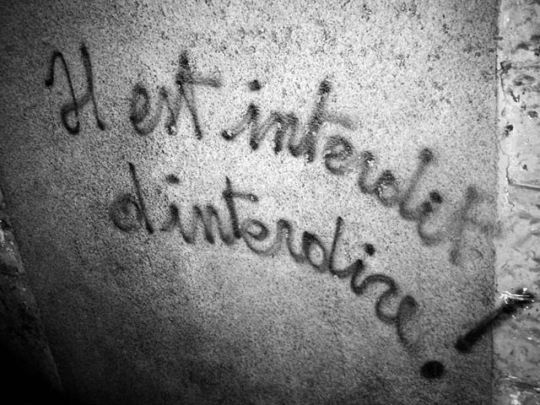
1.
Bruno scratched his thin, bony fingers across the inter-pictorial field, perverting art history, corrupting it, remaking it in his image. This was his only goal: he did not seek fame, riches, or power, but rather sought to leave [traces], or gluckschmerz, as he called them, on the face of the canonical record. He wanted to be found out, he wanted to be unmasked, but when it inevitably happened, he was unprepared. Bruno's gluckschmerz were precisely that: trails of shit tracked across a field of gold. When Praetor arrived with a roll of crisp, white toilet paper, a mop, and a bottle of windex, Bruno reacted impulsively. He would kill this boy, or at the very least have him committed. And thus, the satellites were born.
He establishes a base outside of time, manipulating art history in the process. The inter-pictorial field is disrupted. He spreads rumors: Jesus had a twin, or that his brother was John the Baptist, or that a woman named Fortuna once existed, wielding a terrible wheel. The origins of nearly all the quattrocento conspiracies originate in this horrible man, playing tricks on the great masters.
He also built a refuge, and when the time came, two fleets sailed from the port of Hamburg: one, a cotillion of dumbbells, locked on a series of historical targets, delivering resources; and two, a fleet of boats, sailing first for Argentina, and then finally on to Antarctica, where a colony had been prepared under the ice, waiting for a thousand years.
History retreated there, under the ice, to a place unknown to the chronicles of time, and the people on the boats met other people, who had been there for a long time, and they formed a new society. A terrible society.
This secret of this ancient future was protected through the years, shared with only a small number of Germans, German-Americans among them. And they made a pact to deliver their children to this place someday, God willing, if the clouds ever dissipated and the sky fell down to Earth. And it would, of course, and this is how Praetor ended up there.
What kind of destiny is this, to destroy the world and then be packed up like a sardine and transported to a simulation of a Californian city? Of all places, the East Bay? The fairest city in the world, or the most dysfunctional? Why recreate that, but also, why not?
2.
Bruno moved to "leave his mark," ingratiating himself to the court of Henry VIII, which he attended wearing bufoonishly red stiletto boots, fomenting a secret anti-religion, Geminism, among the literati of 17th century Rome, and bribing the Grand Patriarch of the Thai Sangha to construct a silver shrine to his own origin story, among other nefarious plots.
He also dealt in retrogressed canvases, selling "lost" and "previously unknown" paintings in the future and then trafficking that capital backwards in time to fuel his venal machinations.
His schemes were endless: Posing for a portrait by Otto Dix, using the Dumbbell’s mass reduction field to construct elaborate stone monuments, dressing up in costumes to create "idiosyncrasies" in religious iconography.
And so, the world Praetor grew up in was corrupted, perturbed. An endless refraction of crapsacks, artificial timelines populated by art historical graffiti, false ideologies, and inexplicable cairns. An absence of meaning.
Bruno's piece de resistance: a young prodigy he will mold into the greatest painter of all time. He passes index cards with strange inspirations: a loaf of bread, eggs hanging from a thread, a face resting in wooden stilts. Bruno is just taking the piss, but Salvador Dali takes it seriously. Eventually, he lights himself on fire, while the Tristan chord builds in the background, unable to continue the charade.
3.
Traveling back to the birth of Christ, Bruno decides upon his ultimate trick: he will abduct the infant Christ, then travel back in time moments before his own birth, depositing a duplication in the manger alongside the original. Bruno thus establishes the Geminist Order, or L’Ordre Geministe, which espoused the belief that Christ had a twin, and that this twin’s nature was similarly twinned, both of the flesh and as an anticipatory shadow. Knowledge of the earthly twin was to be suppressed, encoded in the works of great artists to bring forth the double incarnation of the spiritual twin: not the return of Christ, but rather his duplication.
The Geminists promulgated their beliefs throughout the world, hiding behind a dizzying array of fronts: The Freemasons, the Rosicrucians, the Illuminati. All were focused on a singular goal: to identify and train the prophesied Didymus.
Praetor, haunted by the memory of a familial portrait, began unknowingly unraveling the mystery in his Senior year at Duke. Agenteurs of the various intelligence services eagerly awaited the latest draft of his thesis, "The Profile of Time," in which he put forward an iconographical proof for Poussin’s Et in Arcadia Ego.
Over time, belief in the arrival of Didymus waned, and Queen Victoria broke with the order, inspired by a mysterious sadhu to believe the Geminist doctrine to be the work of the devil. She was correct, of course, but the shadow cast by the schism would be catastrophic. Victoria's plan was to slowly, over multiple generations, "thin out" the royal bloodline via infusions of "commoner stock," revealing at the end a pure distillation of the blood of Christ. Didymus would be incited into revealing itself, and all other candidates, henceforth referred to as pretenders, would be mercilessly hunted down.
Upon hearing the news, Madame Blavatsky collapsed onto the floor. She knew, of course, that Victoria's claim to the bloodline was invalid, and had been since the reign of Edward VII. Had Victoria been allowed to proceed with her Didymexit unopposed, the twin flame would be snuffed out. After an exhaustive review of the various and sundry genealogical archives of the European nobility, and with a little help from her trusted coterie of Keralan ninjas, she devised a plan.
Two families were selected: The Hume's of Wedderburn, known throughout the esoteric community as “the keepers of the Burning Bush,” and the Loos family of Hanover, related to Bruno himself, but with a twist: they were double agents for the Swedish Crown. Two sons, one from each family, were abducted in the night by Blavatsky's ninjas and transported to America, where they would be protected by the Pennsylvania Freemasons.
The Loos family first settled in Boalsburg, Pennsylvania, where they claimed Muhlbach, the Boal family mansion, as their ancestral seat. After the the Reopening of Eden in the 1920’s, Great Grandaddy Loos moved the family to Short Hills, New Jersey, where he had been contracted to work as a litigator handling the spiraling custodianship fees incurred by “the afflicted.” Their new house in Short Hills, Traphagen, had been purchased in the 1890’s by Blavatsky, who seemed to have had foreknowledge of the Hansa Bird Apocalypse. New Jersey in the 1920's was a land of extremes: carpet baggers from the surrounding states scooped up real estate, quickly attaining a dominant position in society, taking over the managerial positions that the "natives," suffering from various forms of intellectual impairment and neurocognitive decline, had abandoned in their descent into disability and aphasia. Short Hills, Raritan and Princeton, with their wealthy, educated populations, were but a few oases within this fragmented hellscape.
Sunnyslope, the Watts homestead, remained as it always had in the town of Centre Hall, Pennsylvania. No records existed of its construction; it seemed to have been built around an old logging cabin, now buried into the side of a hill, it's stone walls buttressing the earth. Papa Harold called it the shop, but it was more of a hallway; locked doors sat unopened on all sides, leading to a maze of tunnels dug into the Allegheny mountains.
Everything seemed to be proceeding according to plan, until the zip zippering began. Mother Loos had met Praetor's father, John Loos, in the late 70's on a highway median in Raritan. They had been driving in opposite directions down Route 206, following a triangular formation of purple discs. Suddenly, they realized they were the only cars on the highway, stopped, and waved to each other. "Do you wanna grab a slice?" John called out, uncertain of why he suddenly felt so confident in himself at this strange moment. They ended up at Deluca's, an old, boisterous pub in the center of downtown Raritan. The bar was crowded with students, apparently unaware of the miraculous visitation that had just occurred above their heads. John looked into her eyes and thought, "That's my moonpie right there." She called him twinkle toes.
John died a few months after their wedding, in the chapel at Muhlbach. On a mission to ingratiate himself to his father in law, Harold Watts, he had invited him to a meeting of the Society of Rattling Rattlers, a gentlemen’s society organized the shared consumption of rattlesnake meat. As it turns out, one of them escaped the net, and slithered into the dining room. After a long and arduous autopsy, it was determined that the bite was not from a rattler at all, but rather from an 800-year-old asp retrieved from the basement of the Vittala temple in Karnataka by a Royal expedition in the 19th century. Nothing more was ever said about the incident, and Praetor was raised by his grandparents. Mother Loos began to suffer from seizures, and did not speak again until 1997.
Praetor spent the first nine months of his life inside of a crystal ball, his head strapped into a Persinger apparatus. You see, nearly all of the male children born into the family had died in infancy, plagued by violet convulsions. A retrogressed file from the year 2015 confirmed the family's darkest suspicions: that Victoria's research into animal magnetism had resulted in the discovery of a "zip zap wave" that could be used to target children of a royal bloodline.
After his collapse, and subsequent failure to complete his thesis to the prophecy's satisfaction, it was decided that he would be crucified pre-emptively, beaten over the head with an electromagnetic hammer to force him into the crucible prepared for him.
He fell into a noetic underworld, unable to differentiate between reality and dreams. Eventually, he woke up in a mental hospital, where the plan would be put down, flipped, and ultimately, against the odds, reversed.
0 notes
Text
I recently read in a book by V. Geetha that the female beauty was/is a product of ideas and opinions entertained and expressed by men about women. so like the female beauty expressed in european pictorial art, yeah which were mostly nude women, was framed by the male gaze. the painters and sculptors outlined and framed the beauty by their chisels and brush strokes (which is what the make up is you can say). the male gaze treated women as objects, and the women's beauty were an object too for the male creativity to shape, manipulate and transform in whatever way they find pleasing. (which isn't only limited to the early times because even now it's the men who are majorly handling the fashion industry.)
and the women, vulnerable and helpless under the power of those men, submitted and consented to these beauty roles. the roles for them in which they had no say in. and thus it became so normalized that women started to accept these beauty norms as their own. and it's still going strong
1 note
·
View note
Text
Principle 1: Equitable Use
The design is useful and marketable to people with diverse abilities.
Principle 1 Guidelines
The following guidelines underpin Principle 1:
1a. Provide the same means of use for all users: identical whenever possible; equivalent when not.
1b. Avoid segregating or stigmatizing any users.
1c. Provisions for privacy, security, and safety should be equally available to all users.
1d. Make the design appealing to all users.
Principle 2: Flexibility in Use
The design accommodates a wide range of individual preferences and abilities.
Principle 2 Guidelines
The following guidelines underpin Principle 2:
2a. Provide choice in methods of use.
2b. Accommodate right- or left-handed access and use.
2c. Facilitate the user's accuracy and precision.
2d. Provide adaptability to the user's pace.
Principle 3: Simple and Intuitive Use
Use of the design is easy to understand, regardless of the user's experience, knowledge, language skills, or current concentration level.
Principle 3 Guidelines
The following guidelines underpin Principle 3:
3a. Eliminate unnecessary complexity.
3b. Be consistent with user expectations and intuition.
3c. Accommodate a wide range of literacy and language skills.
3d. Arrange information consistent with its importance.
3e. Provide effective prompting and feedback during and after task completion.
Principle 4: Perceptible Information
The design communicates necessary information effectively to the user, regardless of ambient conditions or the user's sensory abilities.
Principle 4 Guidelines
The following guidelines underpin Principle 4:
4a. Use different modes (pictorial, verbal, tactile) for redundant presentation of essential information.
4b. Provide adequate contrast between essential information and its surroundings.
4c. Maximize "legibility" of essential information.
4d. Differentiate elements in ways that can be described (i.e., make it easy to give instructions or directions).
4e. Provide compatibility with a variety of techniques or devices used by people with sensory limitations.
Principle 5: Tolerance for Error
The design minimizes hazards and the adverse consequences of accidental or unintended actions.
Principle 5 Guidelines
The following guidelines underpin Principle 5:
5a. Arrange elements to minimize hazards and errors: most used elements, most accessible; hazardous elements eliminated, isolated, or shielded.
5b. Provide warnings of hazards and errors.
5c. Provide fail safe features.
5d. Discourage unconscious action in tasks that require vigilance.
Principle 6: Low Physical Effort
The design can be used efficiently and comfortably and with a minimum of fatigue.
Principle 6 Guidelines
The following guidelines underpin Principle 6:
6a. Allow user to maintain a neutral body position.
6b. Use reasonable operating forces.
6c. Minimize repetitive actions.
6d. Minimize sustained physical effort.
Principle 7: Size and Space for Approach and Use
Appropriate size and space is provided for approach, reach, manipulation, and use regardless of user's body size, posture, or mobility.
Principle 7 Guidelines
The following guidelines underpin Principle 7:
7a. Provide a clear line of sight to important elements for any seated or standing user.
7b. Make reach to all components comfortable for any seated or standing user.
7c. Accommodate variations in hand and grip size.
7d. Provide adequate space for the use of assistive devices or personal assistance.
--from the Centre for Excellence in Universal Design
0 notes
Text

Shadow of the Calligraphy
Weekly Illustration 6 - Funny Faces (Type)
Topic Selection:
Texts as Images
Utilizes textual elements to create visual representations.
Focuses on the imaginative integration of letters and words into pictorial forms.
Loud Typography:
Employs bold, impactful typography to grab attention.
Uses scale, color, and arrangement to convey a strong visual message.
Funny Faces:
Incorporates humor and playfulness into facial expressions or characters.
Relies on creative distortions and exaggerations of type to convey emotion and expression.
My Final Choice: Funny Faces Using Typography
The final piece was inspired by the playful idea of creating quirky monsters with typography. Initially, I was drawn to the dynamic energy of "Loud Typography," but none of my initial sketches clicked. Switching gears, I started experimenting with typography to craft fun little creatures, and this process sparked a whole new venture. I was captivated by the characters that emerged from the letters. This led me to blend "Texts as Images" with "Funny Faces," using only typographic elements to build an entire scene.
Design Insight and Background
Creating faces from typography, a method with roots in early 20th-century art movements, has evolved into a unique form of expression. This illustration reimagines that concept, using only text to craft an entire scene filled with personality. The design process was playful, experimenting with how the size, orientation, and layering of letters could bring to life a narrative scene.
Keywords for the Aesthetic of My Design:
Fun
Bouncy
Silly
Scale
Blocky
Concept and Creative Solution:
The idea was to merge "Texts as Images" and "Funny Faces" into a singular, cohesive illustration. By manipulating typographic elements for every part of the scene, from characters to landscapes, I wanted to push the boundaries of what I would normally do with type. This approach turned letters into expressive, animated elements of a story, creating a playful world entirely from typography.
Key Design Decisions:
Children's book style: Chosen for its inviting and friendly vibe.
Pastel color palette: Soften the overall look and add a playful touch.
No linework: To keep the focus on the typography and its versatility.
Emphasis on scale: Used to add depth and interest to the scene.
Only using type: A commitment to showcase the adaptability of typography in illustration.
Vector graphics: I have only done raster, so I had to do some vector.
0 notes